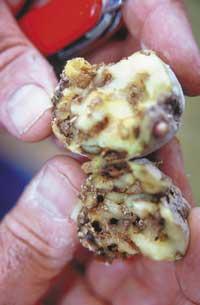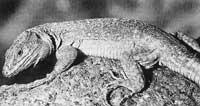Tecia solanivora: nightmare of potato producers
2002/06/09 Mendiburu, Joana - Elhuyar Zientziaren Komunikazioa
The solanivora tecia, the potato eating paste, causes great losses in South America and the Canary Islands.
It is called Tecia solanivora. He is originally from Guatemala and has two things he likes: eating potatoes (he does not eat more) and getting to know the world. Since leaving his country, it has spread to numerous South American countries, such as Costa Rica in 1970, Ecuador in 1996, Venezuela and Colombia. In the year 2000, he arrived in the Canary Islands. With these features you can describe the traveler sits, but there are also other descriptions.
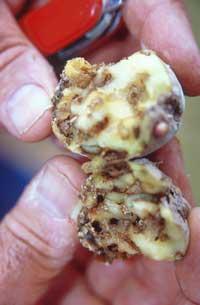
Tecia solanivora sitsa (family of the butterfly group) is the nightmare of potato producers in Guatemala, Ecuador and the Canary Islands. The male of the paste feeds on the essence of the potato, and if the potato is already collected it is equal. The adult Sits loves potato and in a few months can destroy large stocks.
From a scientific point of view, Tecia solanivora is a lepidoptera insect and currently destroyer of the potato areas of South America. Its diffusion is very simple and was found in the Canary Islands in 2000. It is on the red list of the European and Mediterranean Plant Protection Organization (EPPO).
This organization, without control, considers that the potato areas of South America are in danger. Since 1999, a team of researchers from the French Research and Development Institute has been working to identify the moth strategy and launch the ‘biological struggle’ to curb its expansion.
Potato, basic food
The losses caused by the potato Tecia solanivora sits are enormous, on the one hand because it destroys entire areas of potato and, in addition, in many South American countries the potato is a staple food.
In Ecuador, for example, potato is the staple food of a million people. In 2001 this sits destroyed 500,000 sacks of potato and in other tens of thousands of hectares planted nothing could be collected. And the crisis is not over.
The forecasts of this year are that in the areas of potato planting the losses will be greater than those of last year.
Problems in the Canary Islands
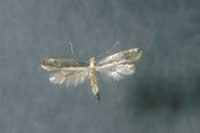
As already mentioned, sits is traveler and, like other invasive insects like the butterfly Cacyreus Marshalli, which eats geranium flower, international transactions help you move from one country to another.
In this case, he traveled from South America to Europe getting into the bag of potato seeds imported from Venezuela. Last year this sits halved potato production on the island of Tenerife and moved from Tenerife to Gran Canaria. This year it is estimated that it will destroy 80% of production. However, farmers have denounced that the Government of the Canary Islands has not given due importance to the problem and that in the beginning it has been extended by the non-adoption of appropriate phytosanitary measures.
First results of the research
To address this problem, two solutions are contemplated: the use of pesticides and insecticides and the ‘biological fight’.
For South American farmers pesticides are too expensive and insecticides are too dangerous for the environment and for the inhabitants of the environment. If treatments are effective, the potato area should be treated for at least 30 consecutive days, which poses a risk to the consumer. In addition, these farmers do not have technology or materials that allow an adequate spread of insecticides.
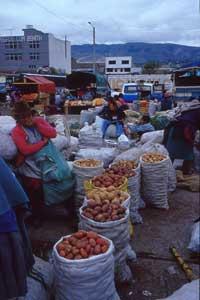
In this situation, the problem remains in the hands of virologists and entomologists. In this work began in 1999 a group of researchers from the University of Quito. So far, a programme has been launched to map the deployment, learn about biology and understand the invasion.
Research has shown that the sits are colonizing new fields and that if not intervened will continue like this. In fact, the adult sits lay an average of 23 eggs a day, of which only 5% die. No wonder, therefore, that it reproduces so easily.
The only enemy of the moment is the cold. It seems that at temperatures below 10ºC and intense rains the sebum is not able to reproduce.
However, in the absence of biological enemies that regulate the moth population, it is spreading without measure. Therefore, researchers want to adapt a biological pesticide. This biological pesticide is a virus of a potato butterfly: Phthorimaea operculella. It is known that the introduction of new species is very dangerous for the vertebrator of the ecosystem, but it seems that in this case there is no other solution.
Until the adaptation of the biological pesticide, potato producers have few measures to protect their production. It is recommended to concentrate the tubers as soon as possible and remove the yellowish leaves, but in reality the effectiveness of these solutions is very limited.
On 4 and 5 June, in Quito, a symposium on this pest was held in which we will have to see the consequences of it.
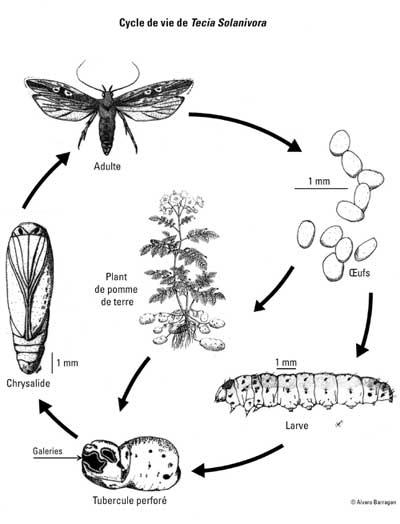
Published in the supplement Estación de Gara.

Gai honi buruzko eduki gehiago
Elhuyarrek garatutako teknologia



